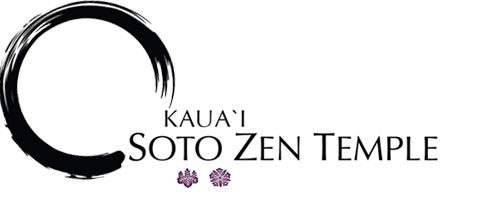This article was published in The Garden Island, Friday August 14, 2009, written by Gerald Hirata
Obon is an important annual observance of Japanese tradition, together with Oshogatsu (New Year’s Day). One ushers in the new year while the other starts the second half of the year. The bon odori, a Buddhist folk dance performed outdoors around a yagura (raised platform), has distinctive music, while colorful lanterns strung around the platform create a festive mood. Japanese customs however, acquired new observances when Obon came to Hawai‘i, adding food booths and game booths that are now a vital part of the local festivity. As we busily prepare for the upcoming festival this weekend in Hanapepe, I remind myself of what Obon means to me.
I have many memories while growing up in McBryde Sugar Plantation’s Camps Two and Three where the old Zenshuji temple was the gathering place for all of our social, cultural and religious activities. Summertime was Obon season and on Kaua‘i it meant a continuous celebration that extended from mid-June to mid-August.
Weeks before the event, the women started the food preparation in the community hall kitchen where the spirit was one of a busy school cafeteria. The men were out tending the temple grounds mowing the lawn, trimming the hedges, setting up the yagura and the ring for the dancers, in addition to the booths for the festival. The temple itself underwent meticulous cleaning from top to bottom.
During this time, at my grandfather’s insistence, the whole family would do a haka mairi (gravesite visitation) with flowers and offerings to our deceased ancestors. We’d pour water over the gravestones, burn incense, offer food and our prayers. When both sets of grandparents died, it meant special trips to the Port Allen and Kapa‘a cemeteries. Gravesite and temple visits are part of what I do today in order to honor deceased relatives and it attains added meaning during the Obon season.
Traditionally my Buddhist upbringing taught me that the ancestral spirits come home to visit with their family and feast together at Obon. The lanterns help guide the spirits home. Each home has a butsudan, a household shrine, where we presented offerings, as if our ancestors were still with us. It’s a joyous feeling to know that although beloved ones have passed, family ties with the deceased are not severed.
When my father passed away two years ago, my initial thought was that I could be with him again during the next Obon season. I started taking bon odori lessons when the churches offered them in the spring. It was the first time I had made a conscious effort to learn so that I could be part of the circle of dancers.
Coincidentally our church undertook a chochin (lantern) project to honor loved ones and nearly a hundred of them were strung over the temple grounds. I felt that more lanterns would mean a well marked path where anyone, including my Dad, could easily find his way home.
I’ve learned that Obon is a good time to reach out and extend feelings of joyousness to everyone, not the kind of joy or happiness that you get from getting what you desire, but one of awareness. The joy of discovering that there is a selfless giving —such as the love and care exhibited by parents for their children or adults with their parents and grandparents. We should extend this selfless practice of giving to our friends and the rest of the community.
This weekend our temple will have more lanterns strung up. I will be one of many dancers in the ring and I will be dancing with the spirits of my ancestors. I will take time out at the food booths to enjoy a plate lunch, saimin, flying-saucer, mochi and manju. Finally, I would welcome everyone to take part and join in on the festivities.
- Gerald Hirata describes himself as a “born again Buddhist,” having returned seven years ago to the temple of his youth. He is a retired, former professor of mathematics and computer science at Kaua’i Community College.
